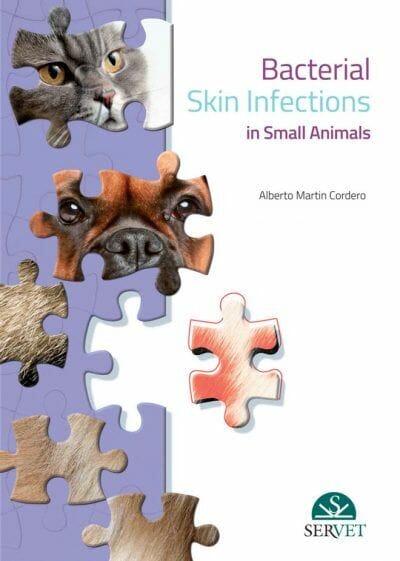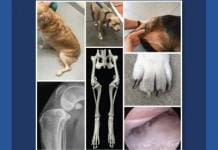1- THE SKIN MICROBIOME AND DIAGNOSIS OF BACTERIAL SKIN INFECTIONS
- The skin microbiome and skin infections
- Microbiome and microbiota
- Bacterial skin infections
- Resident or transient bacteria
- Canine atopic dermatitis and dysbiosis
- Diagnosis of bacterial skin infections
2- SUPERFICIAL BACTERIAL INFECTIONS
- Pyotraumatic dermatitis
- Intertrigo
- Impetigo
- Mucocutaneous pyoderma
- Superficial bacterial folliculitis
3- DEEP BACTERIAL INFECTIONS
- Skin lesions
- Sampling and cytological findings
- Folliculitis, deep furunculosis, and cellulitis
- Mycobacterial infections
- Actinomycosis
- Nocardiosis
4- PSEUDOPYODERMA
- Callus pyoderma
- Juvenile cellulitis
- Acne
- Facial folliculitis and eosinophilic furunculosis
5- BACTERIOLOGICAL CULTURE AND INTERPRETATION OF RESULTS
- Choice of laboratory
- Criteria for sampling for bacterial culture
- Cytology in the diagnosis and treatment of bacterial infections
- Recurrence should not be mistaken for resistance
- Materials
- Transport medium for bacteriological culture
- Technique
- Minimum inhibitory concentration and breakpoints
- Choice of antimicrobial drug
6- TOPICAL TREATMENT OF BACTERIAL SKIN INFECTIONS
- General principles of topical therapy
- Antimicrobial agents and their mechanisms of action
7- SYSTEMIC TREATMENT OF BACTERIAL SKIN INFECTIONS
- Selection of systemic antibiotics
- Treatment duration
- Owner compliance
8- MECHANISMS OF BACTERIAL RESISTANCE
Methicillin-resistant Staphylococcus pseudintermedius (MRSP)
Zoonotic implications of MRSP
MRSP clonality and variants
Biofilm
Contamination and disinfection of hospital areas and medical personnel
BIBLIOGRAPHY










































